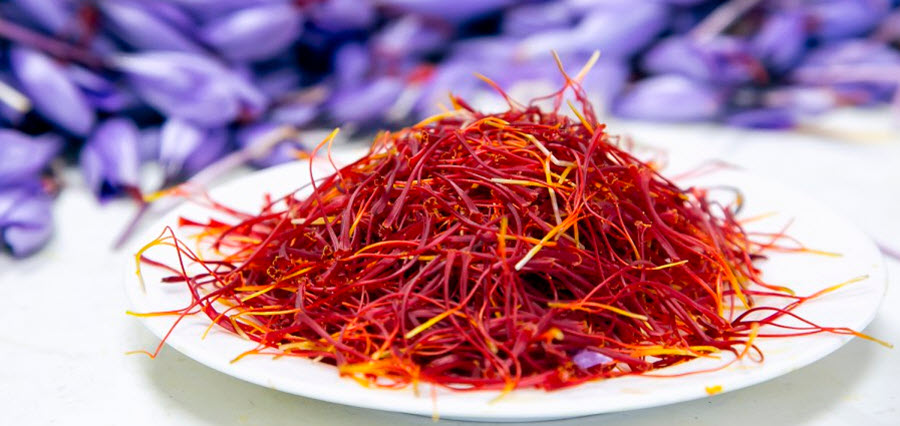
Almost all saffron in the world is grown in a belt that starts in Spain in the west and runs eastwards all the way to India. Spain has a long tradition of both growing and using saffron, and the famous Valencian paella is one of several Spanish dishes where saffron is an essential ingredient.
Saffron cultivation in Europe declined steeply following the fall of the Roman Empire, but two centuries after the Moorish conquest of Spain, saffron was planted again throughout the southern provinces of Andalucia, Castile, La Mancha and Valencia. The tradition of growing saffron was kept alive even after the moors where forced to leave the Iberian peninsula, and the Spanish fondness for saffron also meant that saffron cultivation continued here even after it had vanished from most other parts of Europe. Saffron was for instance extensively cultivated in England one upon a time, but fell out of favour with the English farmers in the 17th century due to increased competition from imported spices and other crops from the New World.
Spain is not one of the major producers and finding genuine Spanish saffron in shops can therefore be difficult. You might have to seek out speciality shops rather than supermarkets, e.g. shops specializing in Spanish delicacies. Over 90% of the world-wide saffron production takes place in Iran, with the second and third largest producers being Greece and Morocco, respectively.

Here are a few indicators of fresh saffron:
Although a slight moistness is a good sign, buyers should ideally stay clear of overly humid saffron.
Since saffron is sold by weight, and wet saffron weighs more than dry saffron, it can be tempting for vendors to add moisture just to get the weight up.
Saffron comes from the crocus flower, and various crocus cultivars give rise to thread types that are often regionally distributed. When buying saffron grown in Spain, you can for instance purchase saffron from cultivars that trade under names such as Spanish Superior and Creme.
The strength of saffron is related to several different factors, including how much style that is picked together with the stigma. The more style, the weaker the flavour, since the flavour comes from the stigmas. The red colour that makes saffron dishes so colourful also comes from the stigmas. Knowing the amount of style in relation to the stigma is therefore important when buying saffron.
To make it easier for traders and consumers, saffron from Spain is classified into various grades according to the relative amounts of red stigma and yellow styles. (Please note that saffron from other countries use other systems.)
The Spanish saffron grades are the following, listed from the strongest to the weakest.
Since the redness is so strongly tied to the flavour of saffron, colouring power is the lead indicator when grading Spanish saffron based on strength. To be classified as coupé, it must exceeds the colour absorbance measure of 190.
The term Coupé comes from the French verb couper, which means to cut. I signifies that the red tips have been cut from the yellow styles.
Real Spanish-grown La Mancha saffron has PDO (specific geographical origin) protected status under European Union law. Outside the European Union, saffron vendors sometimes tries to capitalize on the high reputation of the Spanish La Mancha saffron by taking saffron from other countries and put La Mancha or Mancha on the label. Some goes as far as importing the saffron to Spain, re-packaging it there, and selling it as “Spanish La Mancha Saffron”. As a consumer looking for genuine Spanish La Mancha saffron, it is best to stick to packages that come from Spain and clearly display the PDO mark.
Saffron can be categories under the international standard ISO 3632, a standard based on having the saffron measured for crocin, picrocrocin and safranal in a lab. (Crocin in the element that causes the red colour of the saffron, picrocrocin is associated with the flavour and safranal with the aroma.)
It is unusual for Spanish saffron to go through this testing and being classified according to ISO 3632, since most Spanish saffron producers prefer the national Spanish grading system.
When Spanish coupé saffron is tested, it typically falls in to the highest category of ISO 3632 (Category I), while La Mancha tend to be a low Category I or a Category II.